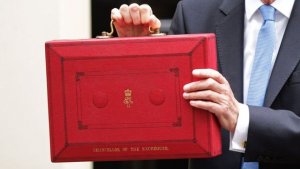- Private Wealth
- Tax & Estate Planning
- Trusts

Shorter Reads
Retrospective Anti-Forestalling and the 2020 Budget Entrepreneurs Relief Changes: What Price the Rule of Law?
7 minute read
Published 12 March 2020
Key information
- Services
- Private Wealth
- Tax & Estate Planning
- Trusts
It was widely predicted that the Chancellor would take steps in the Budget to reform Entrepreneurs Relief, which has been widely criticised for years for failing to meet its intended policy objective of encouraging entrepreneurship whilst at the same time being very expensive for the Exchequer. As the Prime Minister recently commented, “…there are some people who are staggeringly rich who are using that relief to make themselves even more staggeringly rich.”
So the decision to cap the relief at a lifetime limit of £1m (down from £10m) was expected.
It takes only 5 lines in the published draft legislation to reduce the Entrepreneurs Relief cap to £1m. But no-one seriously expected the next 2 1/2 pages of the draft legislation to be taken up with retrospective so-called “anti-forestalling” provisions (designed to defeat pre-Budget planning by those wishing to take advantage of the £10m lifetime limit whilst it still remained in force, in advance of the announcement of its reduction).
This article provides a critique of the retrospectivity of the anti-forestalling provisions of the change to the Entrepreneurs Relief lifetime limit. It questions the lawfulness of the Government’s proposals and it doubts their wisdom: the Chancellor was badly advised by his officials. It explains the affront caused to the rule of law and it concludes that the appropriate course of action is for the Government to withdraw the retrospective aspect of the provisions as the Finance Bill goes through Parliament. If the Government does not voluntarily do so, MPs and peers who care for the rule of law (and many profess to) should force the point by putting down amendments seeking to strike the offending sections from the Bill.
Immediate Effect
It is unusual for a tax rate – or the availability of a relief – to change during a tax year, and most would have expected the new Entrepreneurs Relief cap to come into effect on 6 April 2020 in the usual way. There is a great deal to be said for that. However, it is clearly open to the Government to provide that the new rules should have immediate effect, as it has done.
Faced with a choice of paying tax now at a certain, usually lower, rate or deferring it till the future at a higher rate, taxpayers will often bring forward taxable events in their control to secure the lower rate whilst it remains available. This is called “forestalling”. It is a logical and pragmatic response to tax increases which is explained by the “loss-aversion” principle of economic theory.
Governments have periodically capitalised on the greater short-term tax receipts that inevitably come when taxpayers are told about a proposed tax increase before it takes effect – accepting that it comes at the cost of lower tax receipts overall in the longer term. At other times, governments have acted to prevent forestalling by introducing tax changes with immediate effect on the announcement.
Whether or not to allow forestalling is a political calculation. Either way, there can be no principled objection to the Entrepreneurs Relief changes having immediate effect.
Anti-Forestalling
As explained in the Explanatory Notes to the Entrepreneurs Relief draft legislation, the anti-forestalling provisions seek to render ineffective “…forestalling arrangements that aim to lock-in to the lifetime limits that existed before 11 March 2020 by making use of subsection 28(1) of TCGA 1992 (time of disposal and acquisition where asset disposed of under contract). Section 28(1) provides that where an asset is disposed of under an unconditional contract the time of disposal is the time the contract is made (and not when the asset is conveyed or transferred).”
The planning in question typically triggered a taxable disposal under the “old” Entrepreneurs Relief rules (including the £10m limit) by setting up a new structure controlled by the taxpayer and then exchanging unconditional contracts in a sale with that structure, with completion to happen at a later date. It was usually carried out where a sale to a commercial third party was in progress, but exchange was not going to take place before the Budget (and so would be taxed on the “new” rules – it was expected, on less favourable terms). The timing of the completion of both contracts would be determined by the commercial readiness of the third-party purchaser to pay the sale consideration. Completion on both sales would then happen simultaneously. In essence, the planning introduced a second disposal and therefore a second event of charge. Tax would be paid at the then-prevailing rates in respect of both occasions of charge.
Insofar as relevant – and only as concerns unconditional contracts – s.28 TCGA 1992 provides:
…where an asset is disposed of and acquired under a contract the time at which the disposal and acquisition is made is the time the contract is made (and not, if different, the time at which the asset is conveyed or transferred).
This provision was first introduced with effect from 6 April 1971, in the Finance Act of that year. It has been a constant feature of CGT legislation since that date. It has been considered by numerous courts and tribunals – most notably by the House of Lords in Jerome v Kelly (Inspector of Taxes) [2004] UKHL 25. And it was acknowledged in HMRC’s published guidance in its CGT Manual.
So why introduce 2 1/2 pages of draft legislation – with retrospective effect – to undo it?
As Lord Walker said in Jerome v Kelly (at [33]), what is now s.28 TCGA 1992 was “…intended to provide a simple rule to resolve what would otherwise be a highly debateable point” (i.e. on what date a disposal took place for CGT purposes if completion happened later than exchange of contracts, as is commonly the case). s.28 was Government legislation, which was passed by Parliament with the intention explained by Lord Walker, and it remains as relevant today as it was when first introduced in 1971. It is no loophole exploited by self-serving tax avoiders: it is instead a “simple rule” which has a clear effect that both taxpayers and HMRC should apply straightforwardly whenever it is relevant.
Retrospectivity
Legislation having retrospective effect – whether or not in tax – is the exception, not the rule, in English law. This is because legal certainty is one of the cornerstones of the rule of law, and recognised as such since (at least) the times of Coke, Blackstone and Dicey.
In his seminal book of essays, The Rule of Law, the great Lord Bingham quoted Lord Mansfield (in Vallejo v Wheeler): “[i]n all… transactions the great object should be certainty:… it is of more consequence that a rule should be certain, that whether the rule is established one way rather than the other.” Lord Bingham himself commented: “[n]o one would choose to do business… in a country where parties’ rights and obligations were undecided.”
In a 2015 report on “Tax and the Rule of Law”, the Law Society of England and Wales wrote:
The Society is fully supportive of the government’s objective to discourage avoidance and change the economic incentives associated with tax avoidance but is keen to ensure that opinion is not obtained by measures that erode the rule of law…
Retrospective taxation is a clear example of a breach of the rule of law. It is fortunately rare in the UK. Nevertheless it does happen.
Any form of legislation that takes effect on a date before the parliamentary procedures have been completed should be avoided. There will be cases where, given the risk to the exchequer, any government needs to take steps to combat avoidance outside the usual fiscal events and the usual legislative timetable. Those cases should be kept to an absolute minimum.
All this builds on classical economic and political theory. In Wealth of Nations, Adam Smith wrote:
“the tax which each individual is bound to pay ought to be certain and not arbitrary. The time of payment, the manner of payment, the quantity to be paid, ought all to be clear and plain to the contributor and to every other person.”
Previous governments have respected – or at least paid lip-service to – the importance of legal certainty in the field of tax legislation. In its “Tackling Tax Avoidance” policy paper of March 2011, the Conservative/Liberal Democrat coalition government committed to prior consultation in tax matters in its “Protocol on Unscheduled Announcements of Changes in Tax Law“:
…changes to tax legislation where the change takes effect from a date earlier than the date of announcement will be wholly exceptional.
The last government committed itself to this principle as recently as 6 December 2017 and it is unthinkable that the current Government, and its executive agencies (including HMRC), are unaware of it.
Helpfully, Antony Seely (the policy specialist on taxation in the House of Commons Library) has recently written a Briefing Paper (Number 4369, 4 February 2020), which sets out in some detail the status of retrospective tax legislation in the UK, from the “Rees Rules” (which set out the circumstances in which retrospectivity – to the date on which a new policy was announced – might be appropriate in cases of tax avoidance) to the more recent loan charge.
[DEEMING PROVISION – ROUGH WITH SMOOTH: HMRC v EXEC’ORS OF LORD HOWARD OF HENDERSKELFE]
So on what basis does a desire to counter pre-Budget Entrepreneurs Relief planning qualify as “wholly exceptional” within the meaning of the 2011 Protocol?
Does such planning constitute either “tax evasion or aggressive tax avoidance” (the phrase commonly used by the Government to indicate official disapproval)? Is it tax avoidance at all?
Tax Avoidance?
(Provided, of course, that full disclosure is made to HMRC,) the planning described above clearly does not constitute tax evasion, which is essentially fraudulent conduct.
But “tax avoidance” is a notoriously slippery concept, which is difficult satisfactorily to define.
HMRC defines “tax avoidance” as involving
…bending the rules of the tax system to gain a tax advantage that Parliament never intended.
It often involves contrived, artificial transactions that serve little or no purpose other than to produce this advantage. It involves operating within the letter, but not the spirit, of the law.
In IRC v Willoughby [1997] STC 995 (HL), Counsel for HMRC formulated the distinction between “tax avoidance” and “tax mitigation” as follows:
The hallmark of tax avoidance is that the taxpayer reduces his liability to tax without incurring the economic consequences that Parliament intended to be suffered by any taxpayer qualifying for such reduction in his tax liability. The hallmark of tax mitigation, on the other hand, is that the taxpayer takes advantage of a fiscally attractive option afforded to him by the tax legislation, and genuinely suffers the economic consequences that Parliament intended to be suffered by those taking advantage of the option.
Giving judgment in that case, Lord Normand (giving the only reasoned opinion) accepted HMRC’s submission and said:
Tax avoidance… is a course of action designed to conflict with or defeat the evident intention of Parliament.
Although he would not have foreseen it at the time, Lord Normand’s dictum ought probably to be qualified by the addition of the following words: “…as apparent from the legislation enacted and in force at the time of the arrangements in question.”
Nowhere in the Budget documents does the Government describe Entrepreneurs Relief planning of the type caught by the retrospective anti-forestalling measures as “tax avoidance”: the draft legislation refers only to “…obtaining an advantage by reason of the application of section 28(1) of TCGA 1992”. This is surely because the planning does not answer to the description of “avoidance”, either on HMRC’s own definition or that in Willoughby. The planning falls squarely into the category of “tax mitigation” described in Willoughby – after all, genuinely suffering the economic consequences intended by Parliament was central to the success of the planning!
The draft legislation applies the retrospective anti-forestalling provisions where the parties intended to “[obtain] an advantage by reason of the application of section 28(1) of TCGA 1992.”
The “advantage” referred to cannot exist in isolation: it must arise in comparison with an alternative hypothetical transaction. This is a commonly used test in tax law. But given that the pre-Budget planning attacked by the anti-forestalling provisions relied only on the clear effect of legislation in force at the time, it is hard to see on what basis it gave rise to a tax “advantage”: tax was not deferred, it was brought forward; and the relief was not “increased” in any way, it just applied as it stood at the time.
What Price The Rule Of Law?
If HMRC considered that the restriction of Entrepreneurs Relief might cause a serious loss to the Exchequer, the retrospective anti-forestalling measures might, at least, make some practical economic sense, whatever the legal objections.
So how much does the Office of Budget Responsibility estimate that the measure will raise for HM Treasury between the Budget and 6 April? £5m. No, that isn’t a typo. Just £5m. To put it another way, the Budget estimates that total public sector current receipts will amount to £873bn in 2020-2021. Of which the retrospective effect of the Entrepreneurs Relief anti-forestalling measure in 2019/20 will contribute 0.0005%.
So what price the rule of law? About £5m, apparently.
The pitifully small amount at stake emphasises just how disproportionate these retrospective anti-forestalling measures are.
Human Rights
In R (oao Cartref) v HMRC [2019] EWHC 3382 (Admin), Cockerill J examined whether retrospective (or, in that case, retroactive) legislation bringing the “loan charge” into effect breached the human rights of taxpayers pursuant to Article 1 of Protocol 1 (“A1P1”) to the European Convention on Human Rights (and given effect in English law by the Human Rights Act 1998).
In that case, Cockerill J held that the loan charge was compatible with A1P1 because it pursued a legitimate aim by means reasonably proportionate to the aim sought to be realised.
But given the undoubted “tax avoidance” nature of the disguised remuneration arrangements to which the loan charge was directed, it is very hard to apply the principles in that case to the retrospective anti-forestalling measures in the Budget, which are entirely different in character.
The disproportionality of the measure stands in stark contrast to the reasonableness of the planning and affected taxpayers would seem to have an arguable A1P1 case that the retrospectivity is unlawful.
Shorter Reads
Retrospective Anti-Forestalling and the 2020 Budget Entrepreneurs Relief Changes: What Price the Rule of Law?
Published 12 March 2020
Associated sectors / services
Authors
It was widely predicted that the Chancellor would take steps in the Budget to reform Entrepreneurs Relief, which has been widely criticised for years for failing to meet its intended policy objective of encouraging entrepreneurship whilst at the same time being very expensive for the Exchequer. As the Prime Minister recently commented, “…there are some people who are staggeringly rich who are using that relief to make themselves even more staggeringly rich.”
So the decision to cap the relief at a lifetime limit of £1m (down from £10m) was expected.
It takes only 5 lines in the published draft legislation to reduce the Entrepreneurs Relief cap to £1m. But no-one seriously expected the next 2 1/2 pages of the draft legislation to be taken up with retrospective so-called “anti-forestalling” provisions (designed to defeat pre-Budget planning by those wishing to take advantage of the £10m lifetime limit whilst it still remained in force, in advance of the announcement of its reduction).
This article provides a critique of the retrospectivity of the anti-forestalling provisions of the change to the Entrepreneurs Relief lifetime limit. It questions the lawfulness of the Government’s proposals and it doubts their wisdom: the Chancellor was badly advised by his officials. It explains the affront caused to the rule of law and it concludes that the appropriate course of action is for the Government to withdraw the retrospective aspect of the provisions as the Finance Bill goes through Parliament. If the Government does not voluntarily do so, MPs and peers who care for the rule of law (and many profess to) should force the point by putting down amendments seeking to strike the offending sections from the Bill.
Immediate Effect
It is unusual for a tax rate – or the availability of a relief – to change during a tax year, and most would have expected the new Entrepreneurs Relief cap to come into effect on 6 April 2020 in the usual way. There is a great deal to be said for that. However, it is clearly open to the Government to provide that the new rules should have immediate effect, as it has done.
Faced with a choice of paying tax now at a certain, usually lower, rate or deferring it till the future at a higher rate, taxpayers will often bring forward taxable events in their control to secure the lower rate whilst it remains available. This is called “forestalling”. It is a logical and pragmatic response to tax increases which is explained by the “loss-aversion” principle of economic theory.
Governments have periodically capitalised on the greater short-term tax receipts that inevitably come when taxpayers are told about a proposed tax increase before it takes effect – accepting that it comes at the cost of lower tax receipts overall in the longer term. At other times, governments have acted to prevent forestalling by introducing tax changes with immediate effect on the announcement.
Whether or not to allow forestalling is a political calculation. Either way, there can be no principled objection to the Entrepreneurs Relief changes having immediate effect.
Anti-Forestalling
As explained in the Explanatory Notes to the Entrepreneurs Relief draft legislation, the anti-forestalling provisions seek to render ineffective “…forestalling arrangements that aim to lock-in to the lifetime limits that existed before 11 March 2020 by making use of subsection 28(1) of TCGA 1992 (time of disposal and acquisition where asset disposed of under contract). Section 28(1) provides that where an asset is disposed of under an unconditional contract the time of disposal is the time the contract is made (and not when the asset is conveyed or transferred).”
The planning in question typically triggered a taxable disposal under the “old” Entrepreneurs Relief rules (including the £10m limit) by setting up a new structure controlled by the taxpayer and then exchanging unconditional contracts in a sale with that structure, with completion to happen at a later date. It was usually carried out where a sale to a commercial third party was in progress, but exchange was not going to take place before the Budget (and so would be taxed on the “new” rules – it was expected, on less favourable terms). The timing of the completion of both contracts would be determined by the commercial readiness of the third-party purchaser to pay the sale consideration. Completion on both sales would then happen simultaneously. In essence, the planning introduced a second disposal and therefore a second event of charge. Tax would be paid at the then-prevailing rates in respect of both occasions of charge.
Insofar as relevant – and only as concerns unconditional contracts – s.28 TCGA 1992 provides:
…where an asset is disposed of and acquired under a contract the time at which the disposal and acquisition is made is the time the contract is made (and not, if different, the time at which the asset is conveyed or transferred).
This provision was first introduced with effect from 6 April 1971, in the Finance Act of that year. It has been a constant feature of CGT legislation since that date. It has been considered by numerous courts and tribunals – most notably by the House of Lords in Jerome v Kelly (Inspector of Taxes) [2004] UKHL 25. And it was acknowledged in HMRC’s published guidance in its CGT Manual.
So why introduce 2 1/2 pages of draft legislation – with retrospective effect – to undo it?
As Lord Walker said in Jerome v Kelly (at [33]), what is now s.28 TCGA 1992 was “…intended to provide a simple rule to resolve what would otherwise be a highly debateable point” (i.e. on what date a disposal took place for CGT purposes if completion happened later than exchange of contracts, as is commonly the case). s.28 was Government legislation, which was passed by Parliament with the intention explained by Lord Walker, and it remains as relevant today as it was when first introduced in 1971. It is no loophole exploited by self-serving tax avoiders: it is instead a “simple rule” which has a clear effect that both taxpayers and HMRC should apply straightforwardly whenever it is relevant.
Retrospectivity
Legislation having retrospective effect – whether or not in tax – is the exception, not the rule, in English law. This is because legal certainty is one of the cornerstones of the rule of law, and recognised as such since (at least) the times of Coke, Blackstone and Dicey.
In his seminal book of essays, The Rule of Law, the great Lord Bingham quoted Lord Mansfield (in Vallejo v Wheeler): “[i]n all… transactions the great object should be certainty:… it is of more consequence that a rule should be certain, that whether the rule is established one way rather than the other.” Lord Bingham himself commented: “[n]o one would choose to do business… in a country where parties’ rights and obligations were undecided.”
In a 2015 report on “Tax and the Rule of Law”, the Law Society of England and Wales wrote:
The Society is fully supportive of the government’s objective to discourage avoidance and change the economic incentives associated with tax avoidance but is keen to ensure that opinion is not obtained by measures that erode the rule of law…
Retrospective taxation is a clear example of a breach of the rule of law. It is fortunately rare in the UK. Nevertheless it does happen.
Any form of legislation that takes effect on a date before the parliamentary procedures have been completed should be avoided. There will be cases where, given the risk to the exchequer, any government needs to take steps to combat avoidance outside the usual fiscal events and the usual legislative timetable. Those cases should be kept to an absolute minimum.
All this builds on classical economic and political theory. In Wealth of Nations, Adam Smith wrote:
“the tax which each individual is bound to pay ought to be certain and not arbitrary. The time of payment, the manner of payment, the quantity to be paid, ought all to be clear and plain to the contributor and to every other person.”
Previous governments have respected – or at least paid lip-service to – the importance of legal certainty in the field of tax legislation. In its “Tackling Tax Avoidance” policy paper of March 2011, the Conservative/Liberal Democrat coalition government committed to prior consultation in tax matters in its “Protocol on Unscheduled Announcements of Changes in Tax Law“:
…changes to tax legislation where the change takes effect from a date earlier than the date of announcement will be wholly exceptional.
The last government committed itself to this principle as recently as 6 December 2017 and it is unthinkable that the current Government, and its executive agencies (including HMRC), are unaware of it.
Helpfully, Antony Seely (the policy specialist on taxation in the House of Commons Library) has recently written a Briefing Paper (Number 4369, 4 February 2020), which sets out in some detail the status of retrospective tax legislation in the UK, from the “Rees Rules” (which set out the circumstances in which retrospectivity – to the date on which a new policy was announced – might be appropriate in cases of tax avoidance) to the more recent loan charge.
[DEEMING PROVISION – ROUGH WITH SMOOTH: HMRC v EXEC’ORS OF LORD HOWARD OF HENDERSKELFE]
So on what basis does a desire to counter pre-Budget Entrepreneurs Relief planning qualify as “wholly exceptional” within the meaning of the 2011 Protocol?
Does such planning constitute either “tax evasion or aggressive tax avoidance” (the phrase commonly used by the Government to indicate official disapproval)? Is it tax avoidance at all?
Tax Avoidance?
(Provided, of course, that full disclosure is made to HMRC,) the planning described above clearly does not constitute tax evasion, which is essentially fraudulent conduct.
But “tax avoidance” is a notoriously slippery concept, which is difficult satisfactorily to define.
HMRC defines “tax avoidance” as involving
…bending the rules of the tax system to gain a tax advantage that Parliament never intended.
It often involves contrived, artificial transactions that serve little or no purpose other than to produce this advantage. It involves operating within the letter, but not the spirit, of the law.
In IRC v Willoughby [1997] STC 995 (HL), Counsel for HMRC formulated the distinction between “tax avoidance” and “tax mitigation” as follows:
The hallmark of tax avoidance is that the taxpayer reduces his liability to tax without incurring the economic consequences that Parliament intended to be suffered by any taxpayer qualifying for such reduction in his tax liability. The hallmark of tax mitigation, on the other hand, is that the taxpayer takes advantage of a fiscally attractive option afforded to him by the tax legislation, and genuinely suffers the economic consequences that Parliament intended to be suffered by those taking advantage of the option.
Giving judgment in that case, Lord Normand (giving the only reasoned opinion) accepted HMRC’s submission and said:
Tax avoidance… is a course of action designed to conflict with or defeat the evident intention of Parliament.
Although he would not have foreseen it at the time, Lord Normand’s dictum ought probably to be qualified by the addition of the following words: “…as apparent from the legislation enacted and in force at the time of the arrangements in question.”
Nowhere in the Budget documents does the Government describe Entrepreneurs Relief planning of the type caught by the retrospective anti-forestalling measures as “tax avoidance”: the draft legislation refers only to “…obtaining an advantage by reason of the application of section 28(1) of TCGA 1992”. This is surely because the planning does not answer to the description of “avoidance”, either on HMRC’s own definition or that in Willoughby. The planning falls squarely into the category of “tax mitigation” described in Willoughby – after all, genuinely suffering the economic consequences intended by Parliament was central to the success of the planning!
The draft legislation applies the retrospective anti-forestalling provisions where the parties intended to “[obtain] an advantage by reason of the application of section 28(1) of TCGA 1992.”
The “advantage” referred to cannot exist in isolation: it must arise in comparison with an alternative hypothetical transaction. This is a commonly used test in tax law. But given that the pre-Budget planning attacked by the anti-forestalling provisions relied only on the clear effect of legislation in force at the time, it is hard to see on what basis it gave rise to a tax “advantage”: tax was not deferred, it was brought forward; and the relief was not “increased” in any way, it just applied as it stood at the time.
What Price The Rule Of Law?
If HMRC considered that the restriction of Entrepreneurs Relief might cause a serious loss to the Exchequer, the retrospective anti-forestalling measures might, at least, make some practical economic sense, whatever the legal objections.
So how much does the Office of Budget Responsibility estimate that the measure will raise for HM Treasury between the Budget and 6 April? £5m. No, that isn’t a typo. Just £5m. To put it another way, the Budget estimates that total public sector current receipts will amount to £873bn in 2020-2021. Of which the retrospective effect of the Entrepreneurs Relief anti-forestalling measure in 2019/20 will contribute 0.0005%.
So what price the rule of law? About £5m, apparently.
The pitifully small amount at stake emphasises just how disproportionate these retrospective anti-forestalling measures are.
Human Rights
In R (oao Cartref) v HMRC [2019] EWHC 3382 (Admin), Cockerill J examined whether retrospective (or, in that case, retroactive) legislation bringing the “loan charge” into effect breached the human rights of taxpayers pursuant to Article 1 of Protocol 1 (“A1P1”) to the European Convention on Human Rights (and given effect in English law by the Human Rights Act 1998).
In that case, Cockerill J held that the loan charge was compatible with A1P1 because it pursued a legitimate aim by means reasonably proportionate to the aim sought to be realised.
But given the undoubted “tax avoidance” nature of the disguised remuneration arrangements to which the loan charge was directed, it is very hard to apply the principles in that case to the retrospective anti-forestalling measures in the Budget, which are entirely different in character.
The disproportionality of the measure stands in stark contrast to the reasonableness of the planning and affected taxpayers would seem to have an arguable A1P1 case that the retrospectivity is unlawful.
Associated sectors / services
- Private Wealth
- Tax & Estate Planning
- Trusts
Authors
Need some more information? Make an enquiry below.
Subscribe
Please add your details and your areas of interest below
Article contributor
James
AustenPartner
Specialising in UK trusts, tax & estate planning, Private wealth and Tax disputes & investigations
Enjoy reading our articles? why not subscribe to notifications so you’ll never miss one?
Subscribe to our articlesMessage us on WhatsApp (calling not available)
Please note that Collyer Bristow provides this service during office hours for general information and enquiries only and that no legal or other professional advice will be provided over the WhatsApp platform. Please also note that if you choose to use this platform your personal data is likely to be processed outside the UK and EEA, including in the US. Appropriate legal or other professional opinion should be taken before taking or omitting to take any action in respect of any specific problem. Collyer Bristow LLP accepts no liability for any loss or damage which may arise from reliance on information provided. All information will be deleted immediately upon completion of a conversation.
Close






























































































